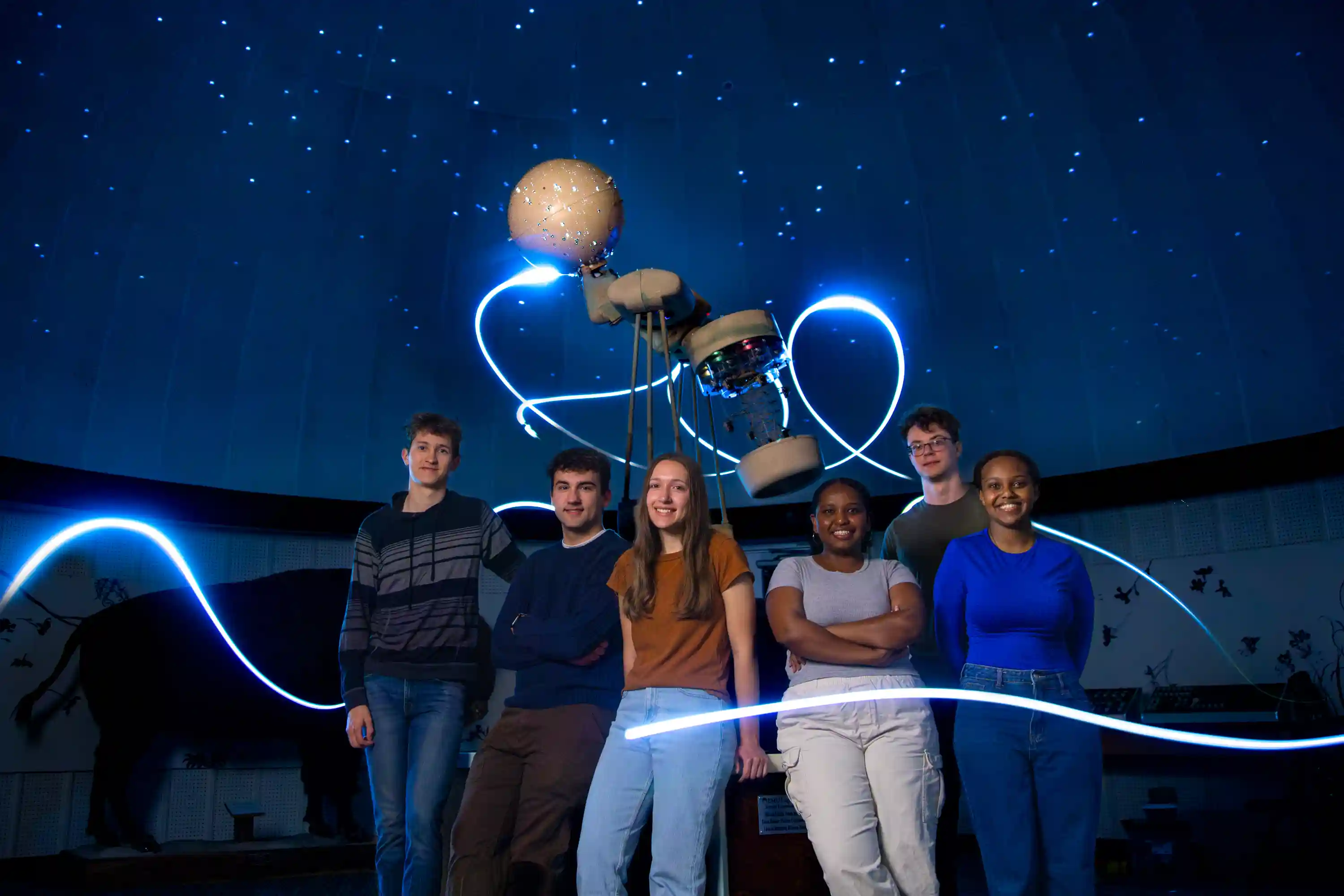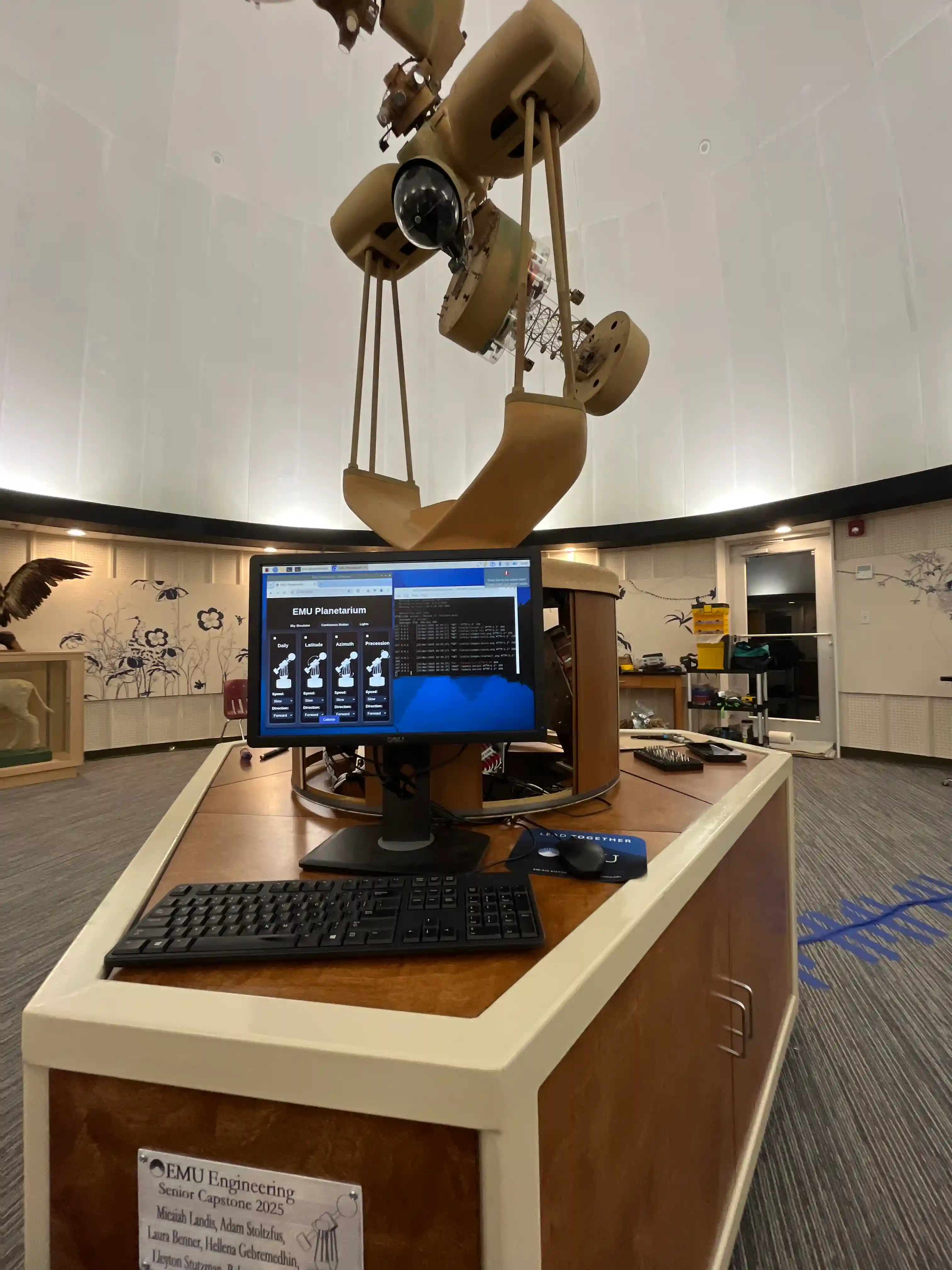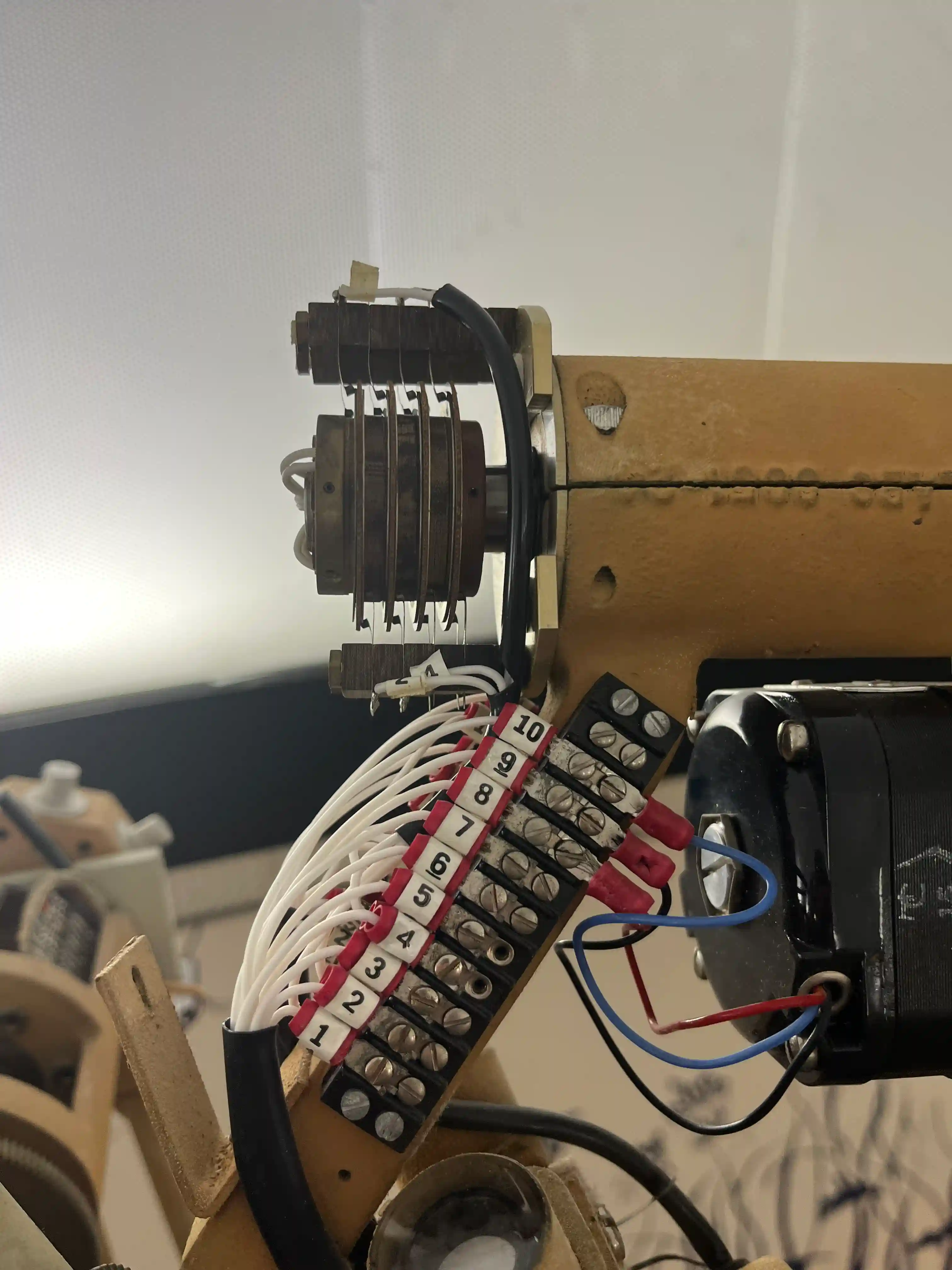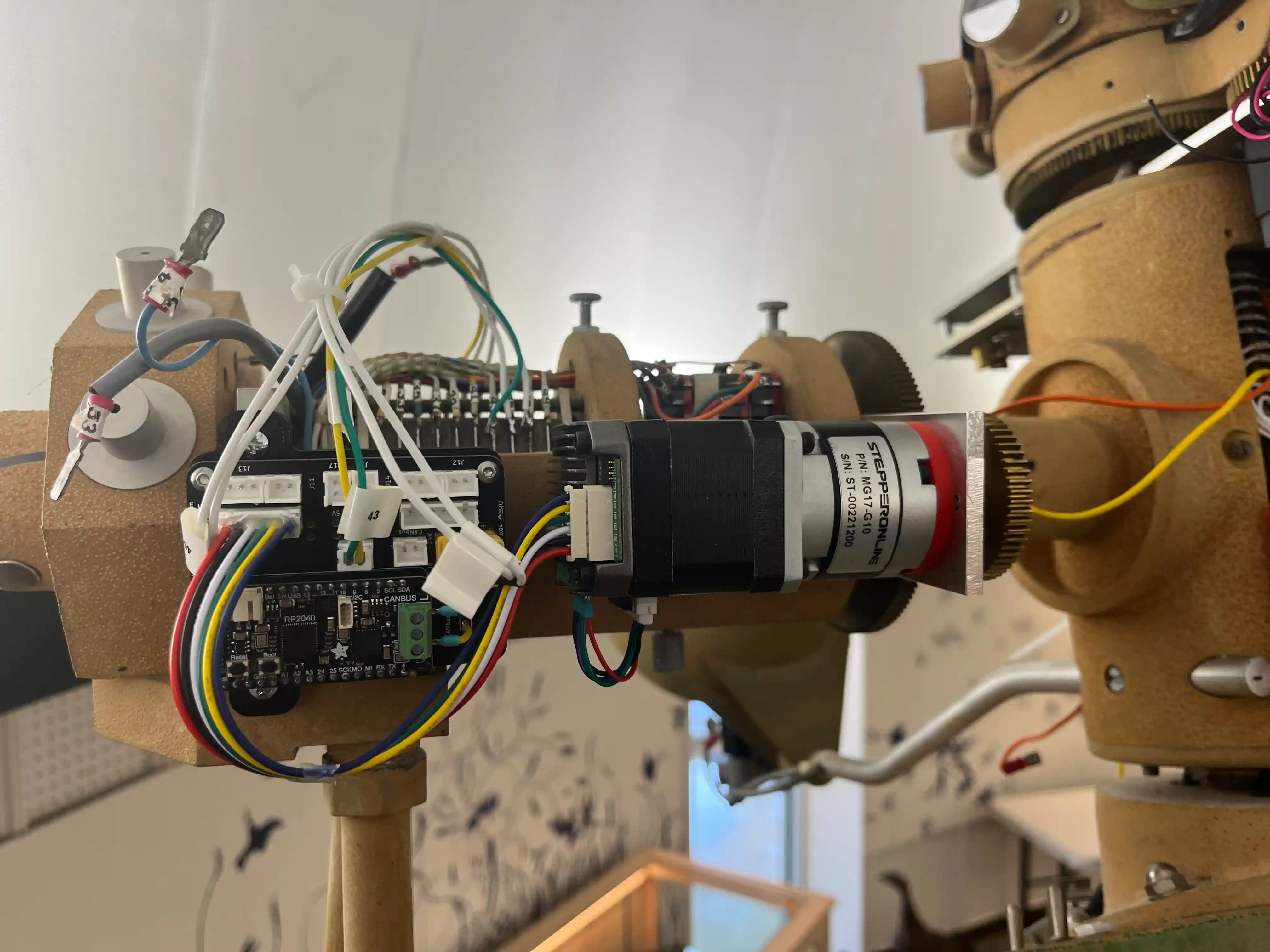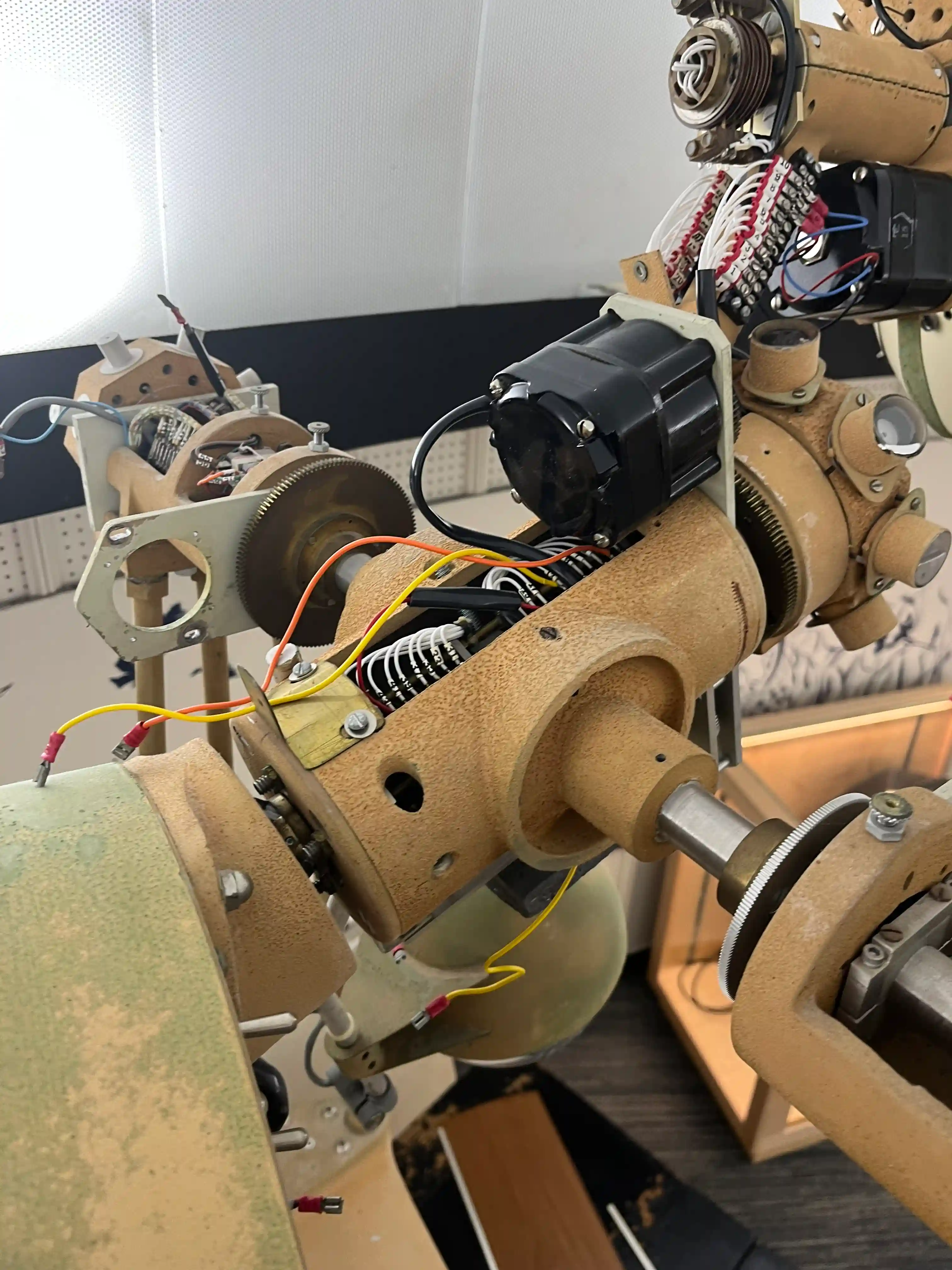EMU Planetarium Projector
The first goal of this project was to get the projector moving on all axes and projecting the stars. In order to reduce the astronomical knowledge required to use the projector, a desired feature was to be able to input a time, date and location for any place on earth and have the projector move to show what the stars look like then. In order to achieve this, the motion system needed to be upgraded to acquire full control over the projector. Projection of the stars was still to come from the original xenon lamp with the difference being that along with motion and other parts of the projector, the light would be toggleable from a digital interface.
With the upgrade to new NEMA17 stepper motors and gearboxes on each axis more torque and speed was available. When powered on and the calibration sequence runs, the axis all move in a set direction until the break beams align and for axis 3 the beams break. This sets all current positions to known values for later positioning. From this the planetarium can move to known positions to show specific skies. Through a multistep upgrade process the original xenon starball lamp was upgraded to an modern LED source. Through use of a fisheye lens a very similar star projection was achieved on the dome of the planetarium room. Additionally projections for the ecliptic, latitude and meridian lines, equatorial coordinates, geo earths, pole lights, twilight, cardinal points, and constellations of Orion and Cassiopeia are all fully functional. While positioning control of the planets was not part of this project's goals, they are still able to be turned on and off. The custom designed base allows the planetarium to roll on casters across the room and easily be lifted up off the wheels with a ratcheting mechanism so that it is level and stationary. The base has storage for all of the curtains and other commonly used items easily accessible from cabinet doors. The web app created is able to control continuous motion of each axis and turn on and off each light in an intuitive four page interface. One of the pages takes inputs of latitude and longitude and date and time and moves the projector to show the stars at the specified time and location. Another page on the web app was for doing a show. This page allowed the user to step through the different positions the planetarium would move too as they read a script out loud.
Once the projector was operable and tested for reliability, many demonstrations were given to show off the features of the projector, both new and old. Reactions were positive, with people viewing the stars finding it to be an enjoyable experience even though this technology is heavily outdated compared to modern planetarium projectors. One full show was planned and put on using one of the original scripts from when the planetarium was open. This show focused on showing off to people who were involved in running the planetarium, providing a valuable experience in recreating many memories of a place that holds so many for multiple generations of people.
See more on EMU's github.
